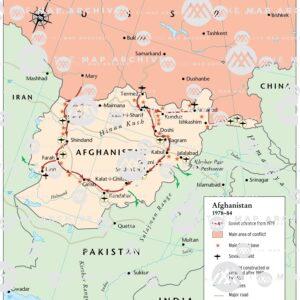Introduction:
The Cold War, a geopolitical and ideological standoff between the United States and the Soviet Union that lasted from the end of World War II in 1945 to the collapse of the Soviet Union in 1991, shaped the contours of global politics for nearly half a century. One of the key battlegrounds in this silent struggle was Europe, a continent divided by the Iron Curtain into Eastern and Western blocs. In this article, we embark on a cartographic journey through the complex tapestry of Cold War Europe, unraveling the layers of political, military, and ideological dynamics that were etched onto the maps of this tumultuous period.
The Iron Curtain:
The term "Iron Curtain," coined by British Prime Minister Winston Churchill in a 1946 speech, vividly described the ideological and physical divide between the democratic West and the communist East. This metaphorical curtain became a tangible reality as the Soviet Union established its sphere of influence over Eastern Europe, erecting a series of physical barriers, both real and symbolic. The Cold War Europe map visually captures this divide, with a stark contrast between the blue of NATO countries and the red of the Warsaw Pact nations.
NATO vs. Warsaw Pact:
The North Atlantic Treaty Organization (NATO) and the Warsaw Pact emerged as the two military alliances that defined Cold War Europe. NATO, formed in 1949, consisted of Western democracies led by the United States, aiming to counter the perceived Soviet threat. The Cold War Europe map reflects the expansion of NATO over the years, with the addition of new member countries in response to changing geopolitical dynamics.
On the opposite side of the Iron Curtain, the Warsaw Pact was established in 1955 as a collective defense treaty among the Eastern Bloc countries, cementing the Soviet Union's control over its satellite states. The Cold War Europe map illustrates the alignment of nations within these military blocs, showcasing the strategic positioning of forces that characterized this era.
Berlin Wall:
The division of Germany into East and West Germany was a microcosm of the broader Cold War conflict. In 1961, the construction of the Berlin Wall physically separated East and West Berlin, serving as a powerful symbol of the divided city and the ideological chasm between communism and democracy. The Cold War Europe map captures the intricate details of this barrier, illustrating the fortified border that ran through the heart of Berlin.
Proxy Wars and Hotspots:
While Europe was the primary theater of the Cold War, proxy conflicts erupted in various global hotspots, further complicating the geopolitical landscape. The Cold War Europe map extends beyond the continent to include key theaters of conflict, such as the Korean Peninsula, Vietnam, and the Middle East. These areas witnessed intense ideological struggles and military engagements between the superpowers and their respective allies.
Cuban Missile Crisis:
The Cuban Missile Crisis of 1962 brought the world to the brink of nuclear war, with the United States and the Soviet Union engaging in a tense standoff over the placement of Soviet ballistic missiles in Cuba. Although geographically distant from Europe, the crisis had profound implications for the continent's security. The Cold War Europe map reflects the heightened state of alert and the strategic positioning of military assets during this critical period.
Détente and the Helsinki Accords:
Amidst the ongoing tensions, the 1970s saw a brief thaw in relations between the superpowers. The policy of détente sought to ease Cold War hostilities, culminating in the signing of the Helsinki Accords in 1975. The Cold War Europe map captures the spirit of détente, illustrating diplomatic efforts to reduce the risk of conflict and promote cooperation in areas such as trade, technology, and human rights.
Fall of the Berlin Wall and the End of the Cold War:
The late 1980s witnessed a seismic shift in Cold War dynamics, culminating in the fall of the Berlin Wall in 1989. The Cold War Europe map undergoes a transformative change as the borders between East and West Germany are erased, symbolizing the reunification of the country and the broader collapse of the Eastern Bloc. The geopolitical landscape of Europe undergoes a radical shift, setting the stage for the dissolution of the Soviet Union in 1991.
Legacy and Unification:
As the Cold War came to an end, Europe faced the challenge of reconciling its divided past. The Cold War Europe map evolves to reflect the reunification of Germany and the emergence of a new geopolitical order. The dissolution of the Warsaw Pact and the expansion of NATO mark a turning point in European history, as former Eastern Bloc nations seek integration into the democratic fold.
Conclusion:
The Cold War Europe map serves as a visual testament to a turbulent era defined by ideological conflicts, military posturing, and geopolitical maneuvering. It captures the ebb and flow of tensions, the rise and fall of alliances, and the seismic shifts that ultimately reshaped the continent. As we reflect on this period through the lens of cartography, we gain a deeper understanding of the forces that shaped Cold War Europe and laid the groundwork for the contemporary geopolitical landscape.





Comments